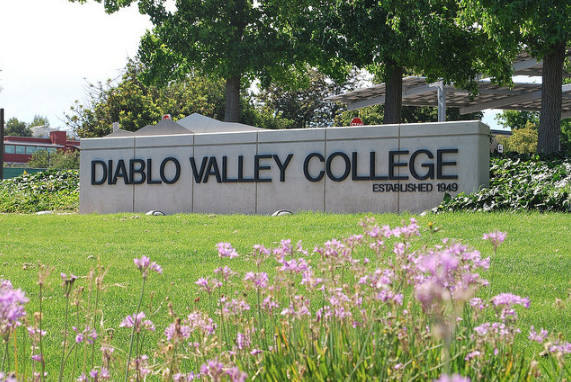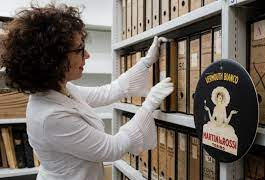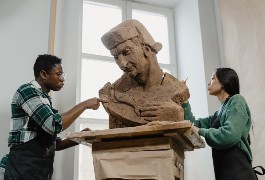Associate in Arts in Art History for Transfer (Associates)
迪布罗谷学院
加利福尼亚州普莱森特希尔
The associate in arts in art history for transfer offers students a curricular program for studying a variety of beginning courses within the field of art history. The art history major is a two-year degree program of transferable courses open to all students. The program requirements are designed for those interested in art history as preparation for transfer. The program is broadly constructed both to prepare students for advanced study in the history of art and to provide a basis for many other fields that require the ability to do independent research, evaluate evidence (visual and textual), and create a coherent argument.
The major has required components of Western art history, non-Western art, and fundamentals of drawing and design. The studio practice courses are common components of art history degrees, and are necessary to an understanding of the fundamentals of art making, which informs theory and critique. Students also select related electives. Foreign language preparation is recommended as many baccalaureate degrees and most post-baccalaureate programs require proficiency in at least one foreign language.
Fine arts faculty and staff are dedicated to assisting students in exploring job opportunities, internships, and transferring to four-year institutions of higher learning. Students interested in the major must contact DVC counselors and art faculty about program requirements and transferability to specific institutions. The student with an associate in arts in art history for transfer is prepared for upper division work in the major or related fields (humanities, interdisciplinary studies, visual studies) at four-year institutions. The major is available at UC and CSU systems, the San Francisco Art Institute, the California College of Art, and at other colleges of art and schools of design. Career opportunities include: art or art history teacher, art conservator, museum curator, art journalist, and other related professions. Career opportunities are also available in galleries, museums, and art organizations. Some career fields will require post-baccalaureate preparation. Students also receive a broad-based liberal arts education that is strong in critical thinking skills, which prepares them for a range of professions.
The associate in arts in art history for transfer is intended for students who plan to complete a bachelor’s degree in a similar major at a CSU campus. Students completing this degree are guaranteed admission to the CSU system, but not to a particular campus or major.
In order to earn the degree, students must:
- Complete 60 CSU-transferable units.
- Complete the California State University-General Education pattern (CSU GE); or the Intersegmental General Education Transfer Curriculum (IGETC) pattern, including the Area 1C requirement for Oral Communication.
- Complete a minimum of 18 units in the major.
- Attain a minimum grade point average (GPA) of 2.0.
- Earn a grade of “C“ or higher in all courses required for the major
Students transferring to a CSU campus that accepts the degree will be required to complete no more than 60 units after transfer to earn a bachelor’s degree. This degree may not be the best option for students intending to transfer to a particular CSU campus or to a university or college that is not part of the CSU system, or those students who do not intend to transfer.
Some courses in the major satisfy both major and CSU GE/ IGETC general education requirements; however, the units are only counted once toward the 60 unit requirement for an associate degree. Some variations in requirements may exist at certain four-year institutions; therefore, students who intend to transfer are advised to refer to the catalog of the prospective transfer institution and consult a counselor.
Students completing any program will be able to...
- identify, describe, and analyze important artworks and issues from respective historical periods using appropriate art historical vocabulary.
- employ critical thinking skills in the study of art.
- describe the intersection of culture, politics, religion, and the arts in specific cultures and time periods.
- apply the elements and principles of design and aesthetics to create works of art.
- relate visual art to cultural traditions in language, literature, music, and philosophy.






